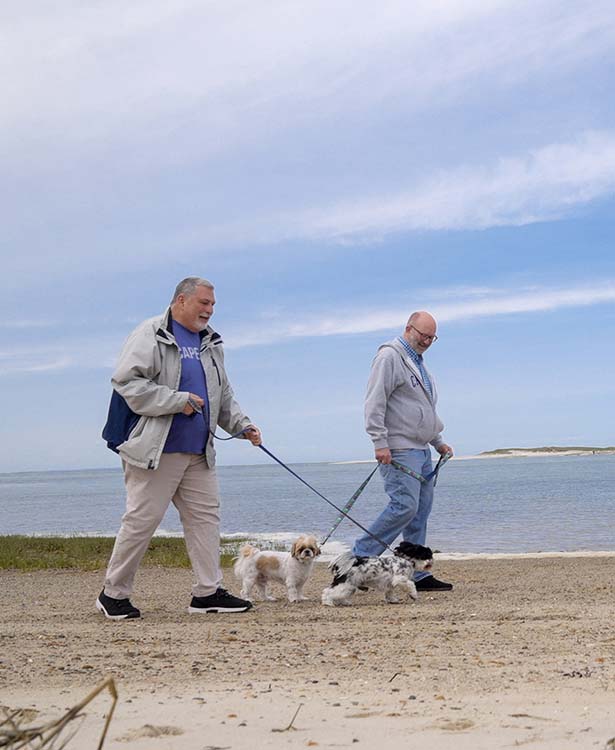The burden of Alzheimer’s disease is immense, ultimately robbing many patients of their memories, cognitive function, and independence. The prognosis is fatal, and although much progress has been made in recent years, the need for additional treatment remains. Despite the fact that there have been many recent scientific breakthroughs, the field as a whole is known for its challenges. Why is Alzheimer’s research so complex and how do we ultimately tackle this debilitating disease?
1. Many unknowns remain about the intricate changes within the brain
The human brain is “the most complex thing that has yet to be discovered in our universe,” with billions of cells and trillions of connections between those cells.1 Although Alzheimer’s disease is usually diagnosed in people 65 years of age and older, changes to the brain can start occurring years or even decades before symptoms appear.2 Advancements in sophisticated brain imaging techniques that monitor emerging pathologies have transformed our understanding of the natural history of Alzheimer’s and provided the means to identify patients and assess the effectiveness of potential therapies.
These pathologies include the abnormal accumulation of two proteins – amyloid beta protein, which clumps together to form “plaques,” and tau, which amasses inside neurons to produce “tangles.” Amyloid beta is a fragment of the larger amyloid precursor protein and is produced throughout the body, while tau is essentially brain specific and is involved in maintaining the structure of neurons.3
Amyloid plaques form throughout the cerebral cortex, whereas tau tangles develop in a specific pattern, first affecting brain areas responsible for learning and memory. Research has shown that the presence and amount of tau tangles match well to the severity and types of symptoms that a person with Alzheimer’s disease experiences. These proteins can disrupt communication between brain cells, which can lead to the loss of brain function, neurodegeneration, and clinical decline — all traditional hallmarks of Alzheimer’s disease.4
A growing body of research indicates that amyloid and tau work together to drive healthy neurons into a diseased state.3 “Think of amyloid-beta as the match that starts the forest fire and tau as the timber that fuels the fire,” explains Dominic Walsh, vice president and head of neurodegeneration research unit at Biogen, who has spent decades in Alzheimer’s research: “While plaques are detectable prior to symptoms, the appearance of tangles is more closely linked to symptom onset.”
Research over the past several years has greatly increased understanding of both amyloid beta and tau and the interplay between the proteins, although there remain many unknowns about the intricate changes that happen within the brain over time.
2. Defeating Alzheimer’s disease warrants multiple scientific approaches
Given the complexity of the brain and disease pathology, along with the tremendous unmet need, researchers across the field are studying a broad range of potential ways to battle the disease. In fact, researchers at Biogen − a pioneer in Alzheimer’s disease − are studying a number of different approaches, or modalities, in hopes of finding treatment breakthroughs.
“The best chance we have at defeating this disease is through a multifaceted scientific approach that involves multiple modalities and targets, to explore what will make a clinically significant impact for patients,” said Walsh.
Different modalities include:
- Antibodies that mimic our natural immune responses in the body and aim to either prevent amyloid beta plaques from forming or work to remove plaques that have formed.5
- Antisense oligonucleotides (ASOs) that are comprised of the same types of building blocks that make up DNA and RNA, the protein-making machinery in the cell, and can modify, reduce, or restore important proteins such as tau.6
- Small molecules which are low molecular weight compounds that are orally administered and can regulate how cells process certain proteins.7
The study of these modalities and other treatments, coupled with increased understanding of the disease itself, can help advance the field with the hope of breakthroughs to transform the trajectory of Alzheimer’s disease.
3. Potentially game-changing research is underway
In a field historically filled with setbacks, a new era of Alzheimer’s disease research is underway.
Researchers are not only investigating a range of modalities for potential treatments but are also looking at how to make treatments more convenient for patients, such as with less frequent, at-home administration. Studies are also looking at early intervention, which may offer the optimal window for therapeutic success to potentially stop or delay the onset of Alzheimer’s symptoms.8 In addition, as tools such as blood-based diagnostics become available, the hope is that in the future, patients who are confirmed to have Alzheimer’s disease pathology may be able to begin treatment earlier in the disease progression.
“We believe that developments in diagnostics, as well as multiple approaches, used either together or in sequence, will be the future of Alzheimer’s treatment,” said Walsh. “The good news is that the course of Alzheimer’s research is more positive than it has ever been. Our goal is that the collective scientific efforts can create a brighter future for patients and families affected by this destructive and burdensome disease,” noted Walsh.
To learn more about Alzheimer’s disease research, visit our website.
- National Library of Medicine, National Center for Biological Information. Discovering the Brain. https://www.ncbi.nlm.nih.gov/books/NBK234155. Accessed June 2023.
- National Institute on Aging. Symptoms and Signs of Alzheimer’s Disease. Available at https://www.nia.nih.gov/health/what-are-signs-alzheimers-disease [nia.nih.gov]. Accessed June 2023.
- Bloom GS. Amyloid-β and tau: the trigger and bullet in Alzheimer disease pathogenesis. JAMA Neurol. 2014 Apr;71(4):505-8. doi: 10.1001/jamaneurol.2013.5847. PMID: 24493463.
- DeTure, M.A., Dickson, D.W. The neuropathological diagnosis of Alzheimer’s disease. Mol Neurodegeneration14, 32 (2019). https://doi.org/10.1186/s13024-019-0333-5
- Mayo Clinic. Alzheimer’s treatments: What’s on the horizon? https://www.mayoclinic.org/diseases-conditions/alzheimers-disease/in-depth/alzheimers-treatments/art-20047780. Accessed June 2023.
- Grabowska-Pyrzewicz, W et al. Antisense oligonucleotides for Alzheimer’s disease therapy: from the mRNA to miRNA paradigm. eBioMedicine. Sep 25;48(17):9840-9858. 1016/j.ebiom.2021.103691.
- Ngo HX, Garneau-Tsodikova S. What are the drugs of the future? Medchemcomm. 2018 Apr 23;9(5):757-758. doi: 10.1039/c8md90019a. PMID: 30108965; PMCID: PMC6072476.
- Crous-Bou, M., Minguillón, C., Gramunt, N. et al. Alzheimer’s disease prevention: From risk factors to early intervention. Alz Res Therapy9, 71 (2017). https://doi.org/10.1186/s13195-017-0297-z.




